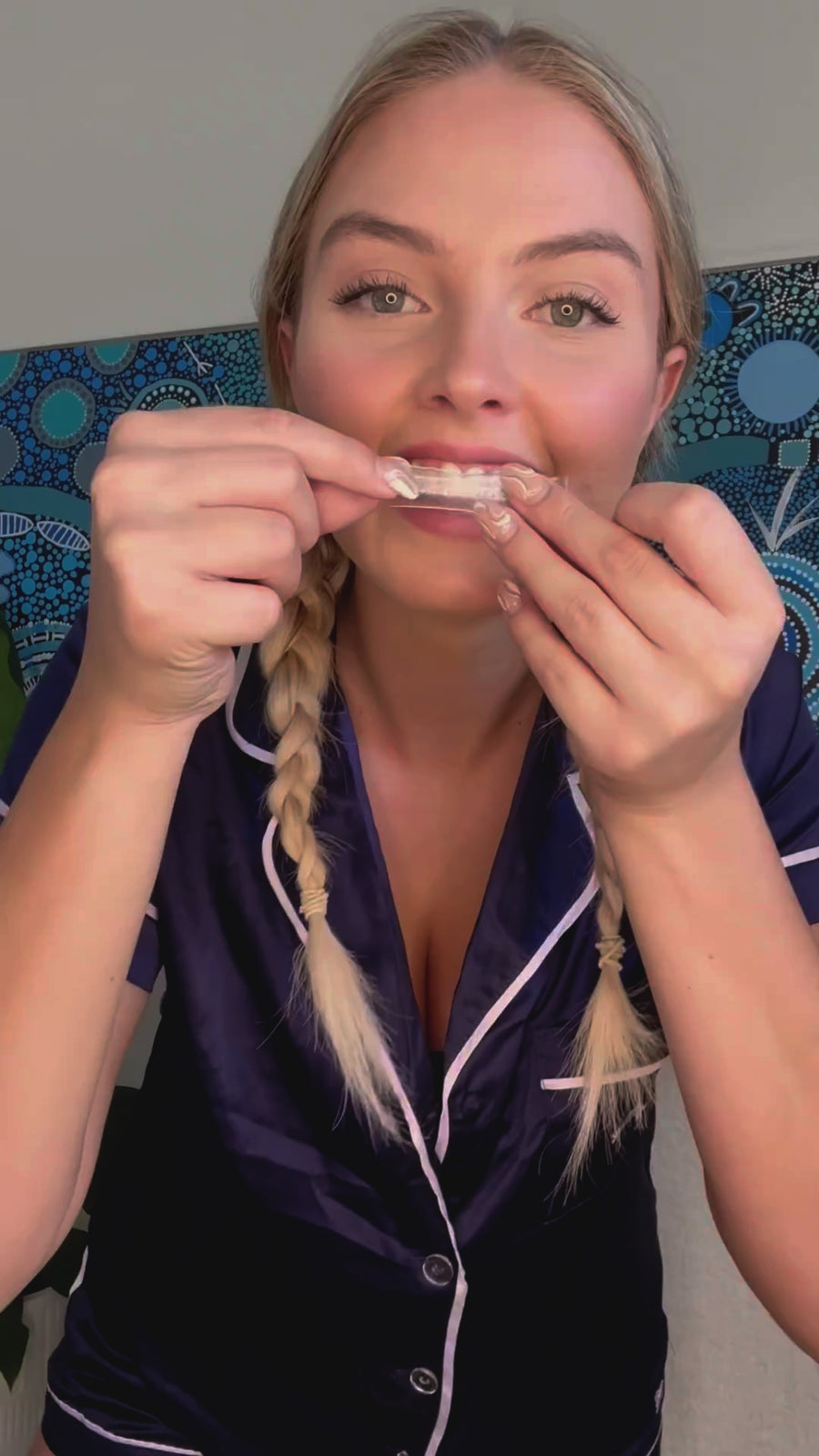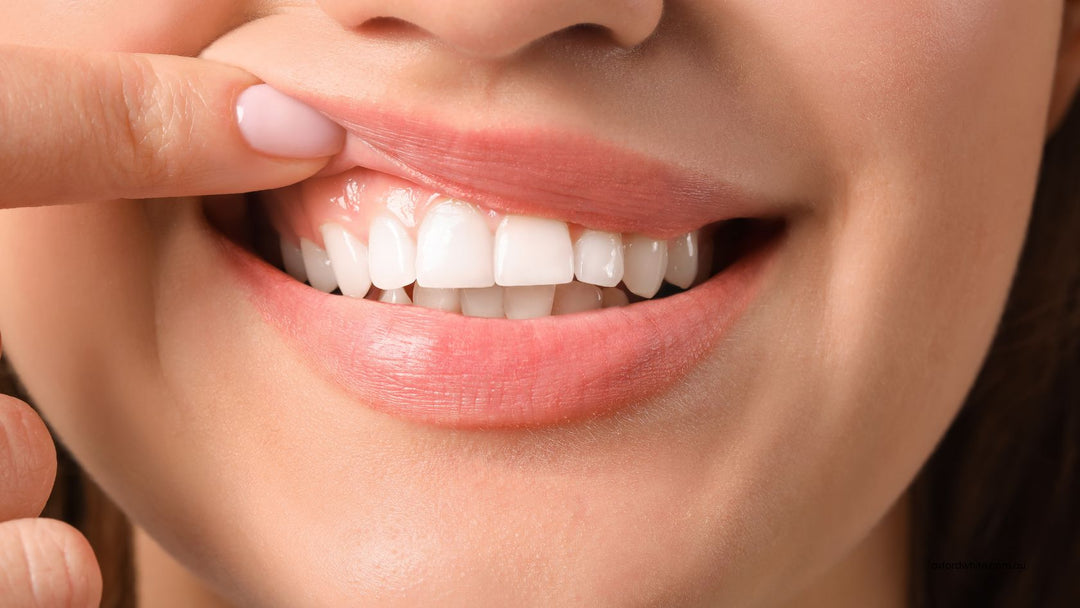What Are Teeth Whitening Strips and How Do They Work?
Have you ever wondered how some people manage to keep their smiles so bright and white? With so many teeth whitening products on the market, it can be difficult to know which options really work. Among the most popular home teeth whitening solutions are teeth whitening strips, which promise an affordable and convenient way to whiten your teeth. But how exactly do they work, and are they as effective as professional teeth whitening treatments? Let's break down the facts about this popular whitening treatment and explore whether it could help you achieve a whiter smile.
What Are Teeth Whitening Strips?
Teeth whitening strips are thin, flexible pieces of plastic coated with a whitening gel that contains bleaching agents like hydrogen peroxide or carbamide peroxide. These active ingredients work to break down chromogens—molecules responsible for staining teeth—into smaller, less visible compounds. Designed for home use, whitening strips are an over-the-counter product that can remove both extrinsic stains (those on the surface of your teeth) and intrinsic stains (those that are deeper within the tooth enamel).
How Do Teeth Whitening Strips Work?
When you apply teeth whitening strips to your teeth, the whitening gel begins to penetrate the enamel to break down stains. Typically, the process involves wearing the strips for about 20 to 30 minutes each day over a period of several weeks, depending on the strength of the product. The whitening agents, hydrogen peroxide or carbamide peroxide, effectively target stains from foods and drinks like red wine, coffee, and tea.
For instance, hydrogen peroxide works by oxidising stains, which changes their structure and makes them easier to remove. Carbamide peroxide, on the other hand, breaks down into hydrogen peroxide, providing a slower release of the bleaching agent, making it ideal for longer-term use in whitening systems.
Do Teeth Whitening Strips Actually Work?
Yes, teeth whitening strips do work for many people, particularly for those with mild to moderate tooth discolouration. Whitening strips can effectively remove surface stains and brighten your smile by several shades. However, the results can vary depending on factors such as the type of staining, the frequency of use, and the concentration of the whitening agent.
It’s important to note that while whitening strips can be effective for removing extrinsic stains caused by foods and drinks, they may not be as effective on intrinsic stains, such as those caused by tooth development disorders or age-related enamel erosion.
What Do Teeth Whitening Strips Do to Your Teeth?
Teeth whitening strips primarily focus on removing surface stains by using bleaching agents that work to lighten the colour of your teeth. However, overuse of these products can lead to potential side effects such as teeth sensitivity and gum irritation. These effects occur because the whitening agents can penetrate the enamel and irritate the underlying dentin or soft tissues in your mouth.
Furthermore, excessive use of whitening strips can lead to demineralisation, where the protective enamel on your teeth becomes weakened. Enamel erosion can make your teeth more susceptible to cavities and other dental issues, which is why it’s crucial to follow the recommended usage guidelines and maintain good oral hygiene habits.
Do You Brush Your Teeth After Whitening Strips?
While it’s important to maintain your regular brushing routine, you should avoid brushing immediately after using whitening strips. The whitening process can temporarily weaken your enamel, making your teeth more vulnerable to abrasion from your toothbrush. It’s generally recommended to wait at least 30 minutes before brushing your teeth after removing the strips.
Whitening Results Timeline
The timeline for seeing results with teeth whitening strips can vary depending on the brand and the concentration of whitening agents. Generally, you can expect to see noticeable results within a week or two of consistent use. Some people may require touch-up treatments every few months to maintain their white smile, especially if they frequently consume staining foods and beverages such as coffee, tea, or red wine.
Are Teeth Whitening Strips Safe?
Teeth whitening strips are considered safe for most people when used according to the instructions. Look for products with the ADA Seal of Acceptance, which ensures that the product has been evaluated for safety and effectiveness. However, if you have sensitive teeth, gum issues, or are concerned about potential side effects, it’s best to consult with a dentist before starting any whitening treatment. Also, be cautious of using whitening strips too frequently, as it can lead to enamel erosion and tooth sensitivity.
Other Whitening Options
If you’re looking for more intense or longer-lasting results, professional teeth whitening treatments provided by a dentist may be a better option. These treatments often use stronger whitening agents and can produce faster, more dramatic results compared to over-the-counter whitening strips. On the other hand, if you prefer a more gradual approach, home teeth whitening kits may offer a balance between convenience and effectiveness.
For those seeking a quick and effective way to whiten their teeth at home, Advanced Whitening Strips provide an excellent option. With their easy-to-use design and professional-grade whitening agents, they offer a reliable way to brighten your smile without breaking the bank.
Ready for a Whiter Smile?
Achieving a brighter smile is within reach with the right teeth whitening products. At Oxford White, our Advanced Whitening Strips are designed to deliver noticeable whitening results in just a few applications. Whether you’re dealing with stubborn surface stains from your favourite foods and drinks or simply want to enhance your smile, our whitening strips are a convenient and effective solution. Visit our website to learn more about how you can start your journey to a whiter, more radiant smile today.





